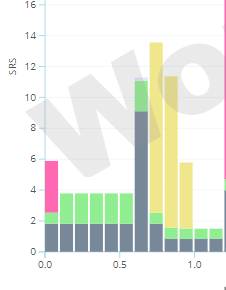I have a situation where the road (divided) I’m coding has a gap in the median barrier. The gap is around 40m. From a head-on crash perspective, coding it as Physical median width >= 5.0m to < 10.0m would result in a higher SRS, but from a Run-off road crash perspective, coding it as a Safety Barrier (0m to <1m) would produce a higher SRS. What is the official approach in these types of situations? Been consistent and using the one median treatment seems like the right choice, in most cases, or else you would be just doubling up the score.
Hi Paul, for the roadside (driver side) are there objects such as trees in the median? If so, you’d record those. Or if the safety end treatments are not safe, you’d record those. If there is nothing in the median, then you’d code i think you’d record the safety barrier as the ‘worst case’ roadside object.
Cheers
Greg
Thanks for the reply Greg. What I’m trying to work out is at want point (median width) would a road safety barrier result in a higher SRS than a physical median at 100km/h. I have run some scenarios for varying median widths but the results don’t seem to add up. I have checked physical median widths from >= 0m to < 1.0m, >= 1.0m to < 5.0m, >= 5.0m to < 10.0m, >= 10.0m to < 20.0m and >= 20.0m. The SRS Head-On LOC gradual drops, as you would expect, but for >= 10.0m to < 20.0m and >= 20.0m there is no score. Is there another attribute that kicks in for the wider medians that zeros out the SRS?
